By
Mohammed Al-beshtawi
The story of a documentary begins with the idea, “lying on the side of the road,” he said with wide eyes, but the treatment and corners of communion, the detailed later study and research, development of the main axes and framing of the message, right down to the various stages of implementation, make the idea a “golden egg”, not so much “lying on the side of the road!”
For the treatment of the idea to give the film value, some documentaries fail to reach their overall goal, a poor treatment and spoiled production, irrespective of being innovative, authentic or unprecedented, leading to this.
The journey of an idea
‘Targeting Journalism’ – a broad subject dealing with trade union bodies and legalities, features multiple strands from human rights to political parties and organisations, intellectuals and writers, but it all comes to nothing in the absence of a treatment and active search for a solution.
A documentary of investigative style, ‘Targeting Journalism‘ director Bashar Hamdan treated the idea in his own way, away from the monotony and routine, by attempting to force through the world of shadows, aversion and hostilities from authorities to him, especially in conflict areas. The press is an easy target, and in the case of Arabs, can be silenced at any moment as they lack protection and safeguards.
The idea for the documentary was addressed on several levels; one level embodying the ‘journey to find’ all such situations in Palestine, Iraq, Egypt and Yemen, another representing the conclusions of expert opinions away from the chatter, pairing comprehensive examples between the targeting of journalists by governing authorities and those from the occupation authorities.
In making the film, the director asked witnesses to recount their stories regarding the targeting of journalists. Through archival footage documenting these attacks, then on to those interviewed, Bashar Hamdan piece by piece worked to expand the framework of the idea. As one strand of narrative ended, another began, the director in succession seeking to draw paths between assassinations, liquidation and enforced disappearances.
Given the relative freedom to find answers to the questions raised, the film up to its conclusion stresses that the targeting of journalists in the Arab world, and blacklisting of Arabs globally, is the result of a lack of experience on the issue of journalists’ professional protection in wars and conflicts. This stems from the weakness of trade union bodies and the inactivity on the part of media and press institutions to secure its members, in its introduction to these reasons, some authorities deeming the press as ‘undesirable’.
First steps visually
The first door opens in the film, archival footage establishing the scene, carefully selected bloodstained cameras and shaky video images of bullets raining in on the media appearing. The sounds of pain, screaming and howling were heard; the fate of an unknown colleague, ‘the profession of trouble’ in the presence of restrictive laws towards their work, or the absence of legislation to provide the necessary protection for them.
Initially, the success of a documentary film is the first visual threshold that enters the viewer from the subject, and in the film, director Bashar Hamdan visualises these thresholds directly. Built from archive footage, the subject matter needs no introduction because the image has purposely brought the viewer into the reality of the situation. In a similarly bleak but equally as effective manner, the film silently closes with the names of all journalists killed since 2012.
There are those who open such films with traditional panoramic shots, and there are those who offer very short excerpts from the interview guests within a fast rhythm, a figment of dramatic thread opening each scene to organise the film into a combination of docu-drama, but Hamdan here chooses to actually mirror, to reflect us as the events take place, without any interference from him.
Horror archive
The director deliberately selected from the archive, footage from Arab conflict zones: Palestine, Egypt, Iraq, Yemen to form an overall picture on the subject. It was clear from his selection that these clarified the situation of how journalists were targeted and their causes.
The archive footage shows the true facts of the situation including condemnation certificates for journalists and describes the ways in which they have been targeted, moving from analysis to reality in Iraq, Palestine and Yemen.
In Egypt, Bashar Hamdan featured the investigation into the 2003 disappearance of Reda Helal, deputy editor of Al-Ahram newspaper. The film went to the Al-Ahram Foundation, local police, the detention cells and a hospital for mental illness; all however to no avail as the disappearance remains a mystery, even after the change of leadership. The director did however leave the door ajar for the viewer to see what has been made available to him, the lid of concealment firmly in place.
Footage was then obtained alongside scenes from the video archives, an expression of the director on the status of the ongoing conflict in those areas and the effort behind the broadcast images bearing signs of fear and anxiety. This is a theme underlying throughout the film to illustrate the scale of the horror and which will be the precursor to the process of alienation in the follow-up events; because there are elements of suspense, sequence and surprise.
-
Bashar Hamdan – Director of Targeting Journalism
Angles and camera movement
Through varied angles and the footage’s imaging, colourful filmmaking techniques were employed to visually express the director’s work. Between the filming of interviewees, establishing footage, animation and camera sequences of witnesses in the field with different angles of framing were used. For example, a snapshot of the Yemeni street crowded by demonstrators is taken from the corner high, from top to bottom, to suggest the scope of the scene and its influence; a bird’s eye view afforded to the viewer to see the scene in its entirety.
For the earlier overcrowding scene, an optical separator was used, declaring the end of the ‘journey to find’ the situation revolving around violations in Palestine, Gaza, and the start of a new ‘Search Journey’ in Yemen.
Some angles were slanted, an expression of the state of anxiety, because the camera in this situation reflected the tension, confusion and instability, being more the embodiment of the prevailing violence.
Other footage takes place from the camera’s own eye, foremost in the streets and among the demonstrators. This provides its own opinion, being the footage of the situation and people themselves, for example the tracking of the Reda Helal file in Egypt.
Rhythm – the picture
The harmony and rhythm of the picture, an expression of the gradual climb towards the peak, is both fast and slow, embodied in some shots, for example the scene of overcrowded protester filled streets in the Yemeni capital of Sanaa. Another is in the final scene which displays some images of the targeted journalists, as if the director wanted to reinforce that image, the slow pace remaining etched in the viewer’s memory.
It could be said that the music – composed and arranged by Ghiya Rushidat – was able to form the audio language of the subject. To express emotional situations in the film; anxiety, confusion, uncertainty and fear, Ghiya succeeded in raising the emotions of the viewer.
When targeting journalists
It is noteworthy that the film ‘Targeting Journalism’, produced by a company in Jordan, was presented in both English and Arabic on Al-Jazeera and was selected to participate in the channel’s 9th International Documentary Film Festival in 2013, nominated also to compete for the Jury for Best Film Average Award, as chosen by the Walkley Foundation Foundation to participate in the international campaign for the freedom of the press and supporting journalists in that year.
The film was also presented at the seminar held by the freedoms and human rights management on the occasion of the World Human Rights Day to combat the impunity of the killers of journalists from punishment in history, the film chosen by the International Federation of Journalists as an introduction in symposiums and lectures also.

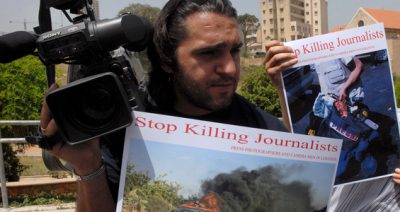
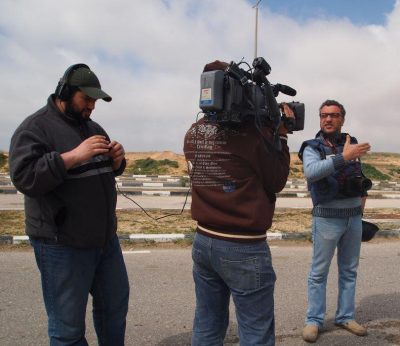
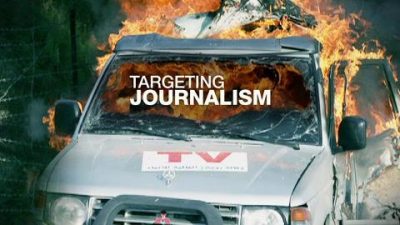
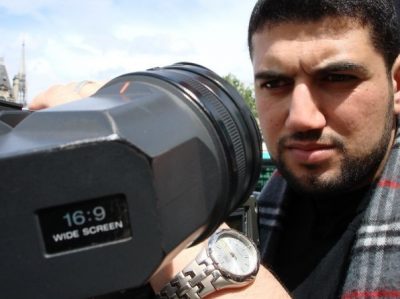
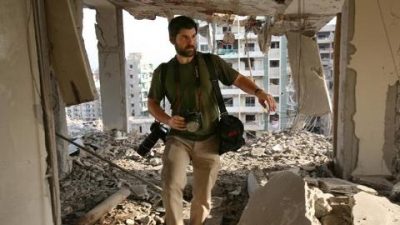
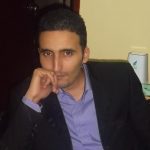
No Comments Yet!
You can be first to comment this post!